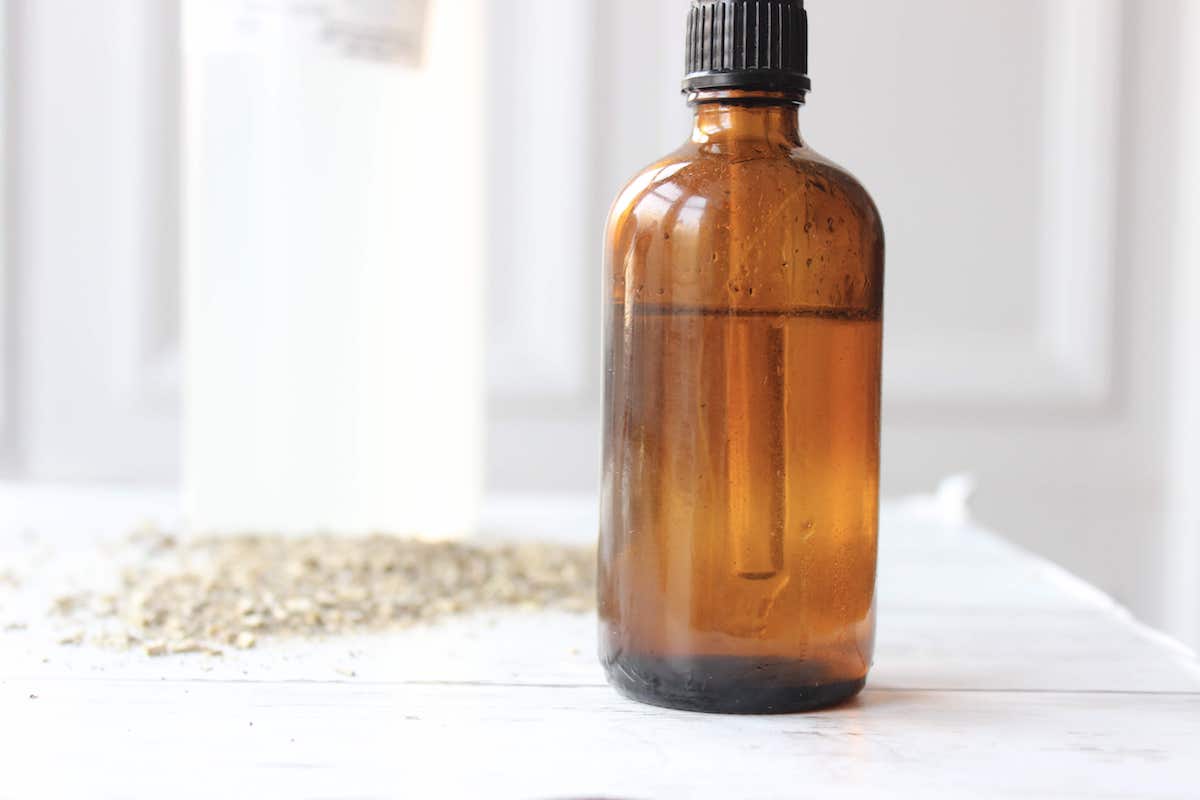Ingredients
Equipment
Method
Step 1: choose what you’ll tincture. Here are some options:
- Lemon balm - Calming and soothing
- Echinacea - Immune support during flu season
- Lavender - Relaxation and stress relief
- Cannabis - Can be used for pain relief or relaxation (make sure to check your local laws)
- Chamomile - Gentle and calming
- You can also experiment with combinations of different herbs and tailor the tincture to your needs. Using fresh plants or dried herbs is a personal preference, though fresh plant material may result in a shorter shelf life than a tincture made with dried plants.
Step 2: Prepare your herbs
- If you’re using fresh herbs, rinse them and pat dry to remove the excess water. You can also let them sit out overnight to dry.
- Use a knife or food processor to chop them into small pieces. We do this to maximise the surface area of the plant that is exposed to the glycerin when making the tincture.
- Add your dried or fresh herbs to a clean glass jar. If you’re using fresh, fill the jar ¾ of the way full and ⅓ of the way full if you’re using dried.
- Combine 3 parts glycerin with 1 part water. This mixture makes sure that the glycerine is still strong enough to extract the beneficial compounds but is a bit easier to work with.
- Pour the glycine-water mixture over the herbs until everything is completely submerged. Leave a bit of space at the top of your jar to allow for dried herbs to expand. Gently tap the jar to remove any air bubbles or stir the mixture so everything is combined.
- Add a lid and date and label the jar. Store it in a cool, dark place at room temperature for 4-6 weeks. Aim to shake your jar every day or so to make sure everything is completely covered with the glycerin.
- After 6 weeks use layers of cheesecloth (you can double it over to get a finer strain) or a mesh strainer to strain off the tincture. If you don't dilute your mixture, I recommend using a mesh strainer to strain off the tincture because glycerin is sticky. I used a strainer for the first strain and cheesecloth for the second strain.
- Add the liquid to an amber glass bottle or other storage container.
